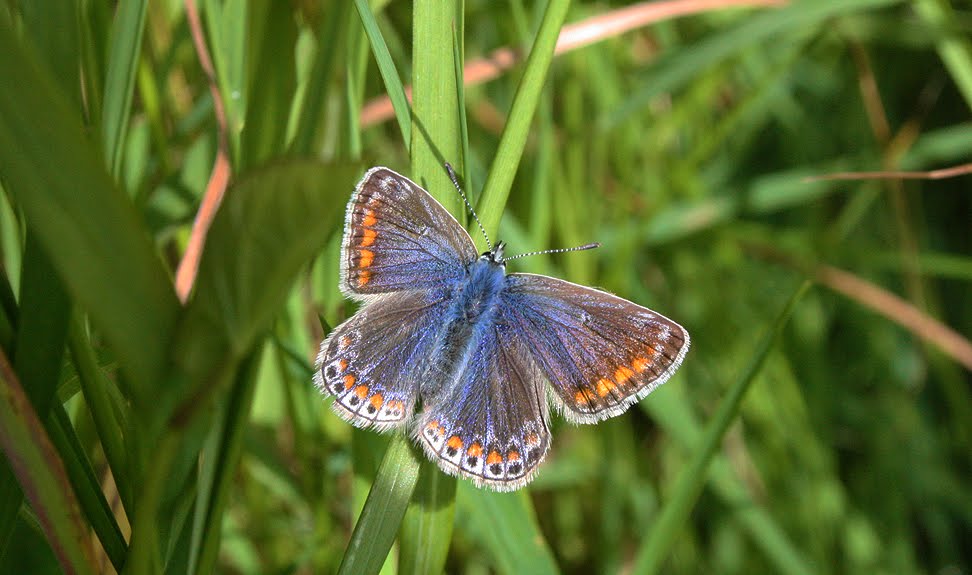Tallying up the butterflies of 2012
1. Peacock butterfly (Inachis io)
Its pretty and its common, exactly what you want from a butterfly.
2. Small tortoiseshell (Aglais urticae)
Also quite common, but not always as approachable as you might think
3. Painted lady (Vanessa cardui)
Managed to spot a couple at the very end of the season, they are common outside the city but in the centre are quite hard to find.
4. Red admiral (Vanessa atalanta)
Towards the end of the summer season this butterfly becomes quite common. It is not unusual to find a bush entirely with examples of this species.
5. Common blue (Polyommatus icarus)
Even those without an interest in insects probably have to admit that the common blue makes a great subject for photography. Its often quite vivid and is relatively approachable. Not to mention that unlike most Irish butterflies its underwing has quite interesting patterns.
6. Speckled wood (Pararge aegeria)
A constant companion on my summer time walks. The speckled wood is probably more interesting behaviourally then visually as it’s quite territorial and aggressively defends its patch from other butterflies. It has also ruined my attempts to photograph nearby species on occasion by scaring them off!
7. Meadow brown (Maniola jurtina)
A well camouflaged butterfly often found sitting with its wings closed and enjoying the camouflage that its brown colouration affords it. With wings open it is actually quite nice to look at, I like those false eyes with the yellowish surroundings.
8. Ringlet (Aphantopus hyperantus)
I admit I am cheating here; this shot is from last year. This years shots where lost due to camera theft and the only surviving picture is buried somewhere in a facebook page where I can’t find it. I swear, I had pictures!
9. Green veined white (Pieris napi)
Ireland’s most common white butterfly. The green veined is easy enough to identify due to its underwing being patterned with green veins (yes). The other species don’t have this.
10. Small white (Pieris rapae)
Can be hard to tell apart from the large white except that its size is closer to that of the other whites.
11. Large white (Pieris brassicae)
Like the above species but much larger and with a different pattern of black on its wings, in the field its quite easy to tell the size difference.
12. Cryptic wood white (Leptidea juvernica)
Only recently named species, the cryptic wood white is small, has rounded wings and has weak flight. The common wood white is almost identical but is quite hard to find in Ireland. Outside the Burren and select area the cryptic is the primary wood white species.
13. Orange tip (Anthocharis cardamines)
Easy to identify with the males having bright orange tips to their wings and both genders having a distinct green marbling on its underwing. Its flight season is quite short and 2012 was the first year where I managed to catch it on camera.
Species I would like in 2012. Holly blue. Small blue, all the frits, green hairstreak and a couple of others.




























































